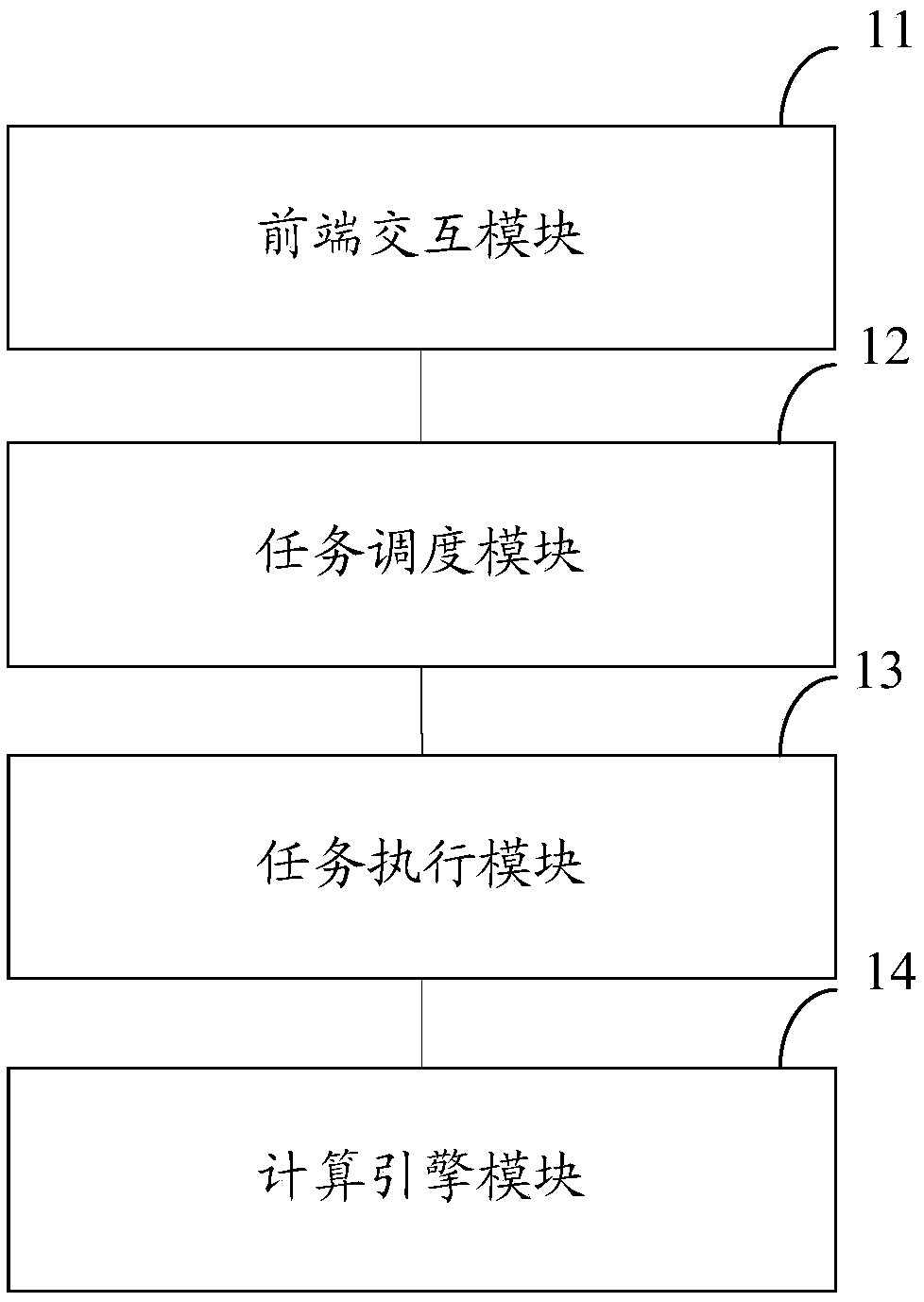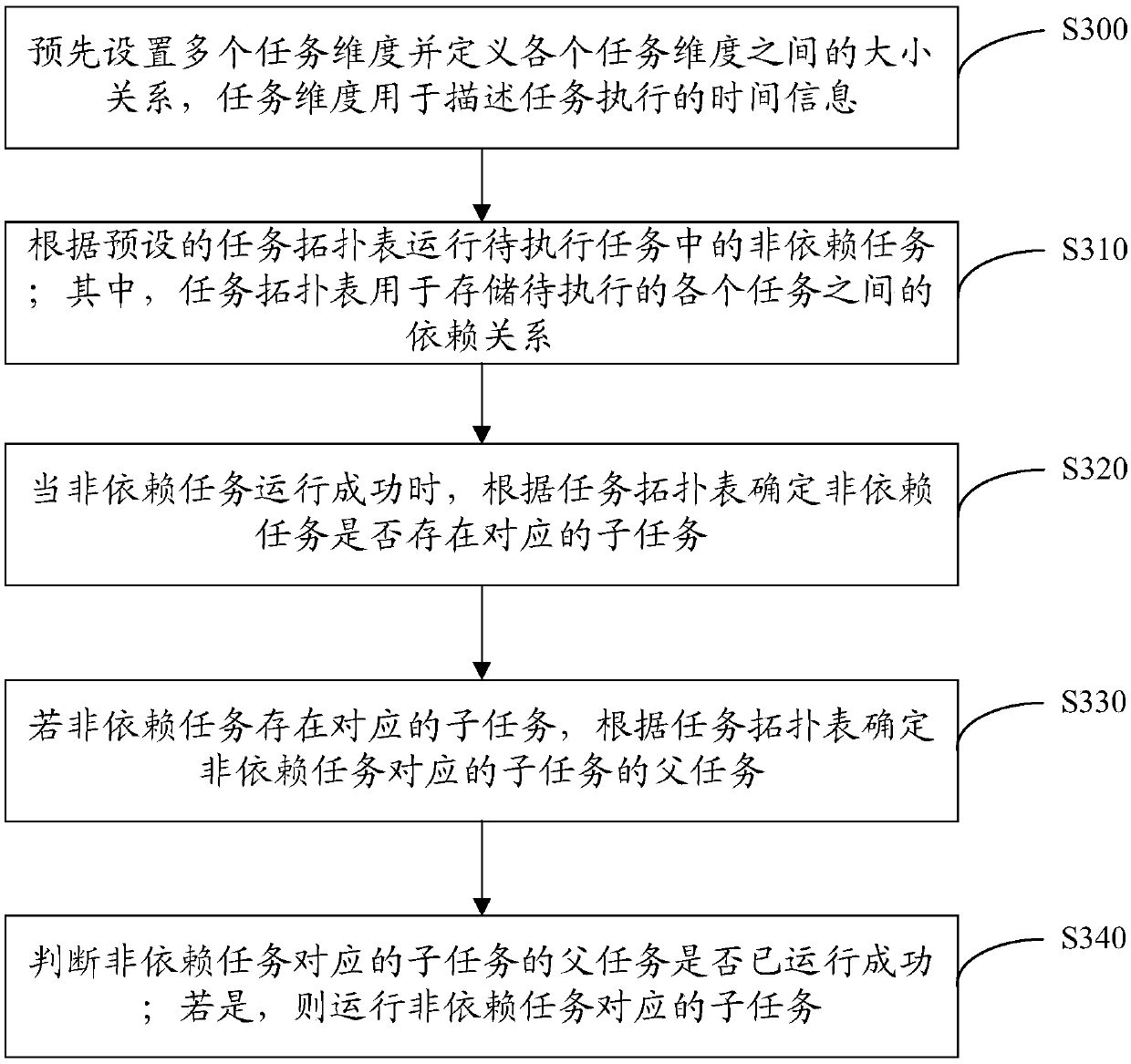Distributed task scheduling system
A technology for distributed tasks and task scheduling, applied in the field of distributed task scheduling systems, can solve problems such as the inability to concurrently run a large number of tasks, the burden of machines, and the limited number of tasks running at the same time. , the effect of increasing concurrency and solving performance bottlenecks
- Summary
- Abstract
- Description
- Claims
- Application Information
AI Technical Summary
Problems solved by technology
Method used
Image
Examples
Embodiment 1
[0017] figure 1 A schematic structural diagram of a distributed task scheduling system provided by Embodiment 1 of the present invention is shown. Wherein, the distributed task scheduling system includes: a front-end interaction module 11, a task scheduling module 12, a plurality of distributed task execution modules 13 (only one is shown in the figure), and a computing engine module 14; wherein, the front-end interaction module 11 , for sending a task interaction request to the task scheduling module 12 according to the received task interaction operation related to the task, and receiving the task interaction result returned by the task scheduling module 12; The task interaction request sent by 11 determines each task to be executed, and distributes each task to be executed to the task execution module 13; the task execution module 13 is used to execute the task distributed by the task scheduling module, and sends the task to the task The scheduling module returns the task ...
Embodiment 2
[0021] figure 2 A schematic flowchart of a task recovery method provided by Embodiment 2 of the present invention is shown. Preferably, the task recovery method is applied to the distributed task scheduling system in Embodiment 1 of the present invention. Of course, those skilled in the art can know that the task recovery method can also be applied to other forms of systems or devices, and the present invention does not limit the application scenarios of the task recovery method.
[0022] In order to facilitate understanding, it is described by taking the application of the task recovery method to the distributed task scheduling system in Embodiment 1 as an example. Such as figure 2 As shown, the task recovery method includes the following steps:
[0023] Step S210: Create a metadata file corresponding to the task for a successfully started task, and record task-related information of the task through the metadata file corresponding to the task during the running process ...
example 1
[0034] The local task recovery method is mainly used for task recovery locally in each task execution module, and each task execution module is responsible for the recovery operation of each task inside the module. This method has many advantages such as fast transmission speed and convenient operation.
[0035] Specifically, when the local task recovery method is adopted, step S210 is specifically: when creating a metadata file corresponding to the task for a successfully started task, in the local storage space of the task execution module used to run the successfully started task Create a metadata file corresponding to the task. That is to say, each task execution module creates a metadata file corresponding to the task in the local storage space of this module for the task in this module. The metadata file can only be accessed by this module, and other task execution modules No access without authorization.
[0036] Correspondingly, step S220 is specifically: the task exe...
PUM
 Login to View More
Login to View More Abstract
Description
Claims
Application Information
 Login to View More
Login to View More - R&D
- Intellectual Property
- Life Sciences
- Materials
- Tech Scout
- Unparalleled Data Quality
- Higher Quality Content
- 60% Fewer Hallucinations
Browse by: Latest US Patents, China's latest patents, Technical Efficacy Thesaurus, Application Domain, Technology Topic, Popular Technical Reports.
© 2025 PatSnap. All rights reserved.Legal|Privacy policy|Modern Slavery Act Transparency Statement|Sitemap|About US| Contact US: help@patsnap.com



